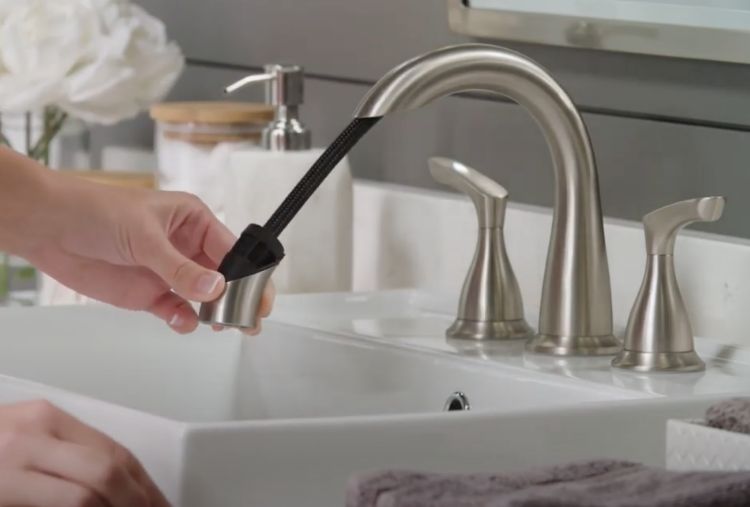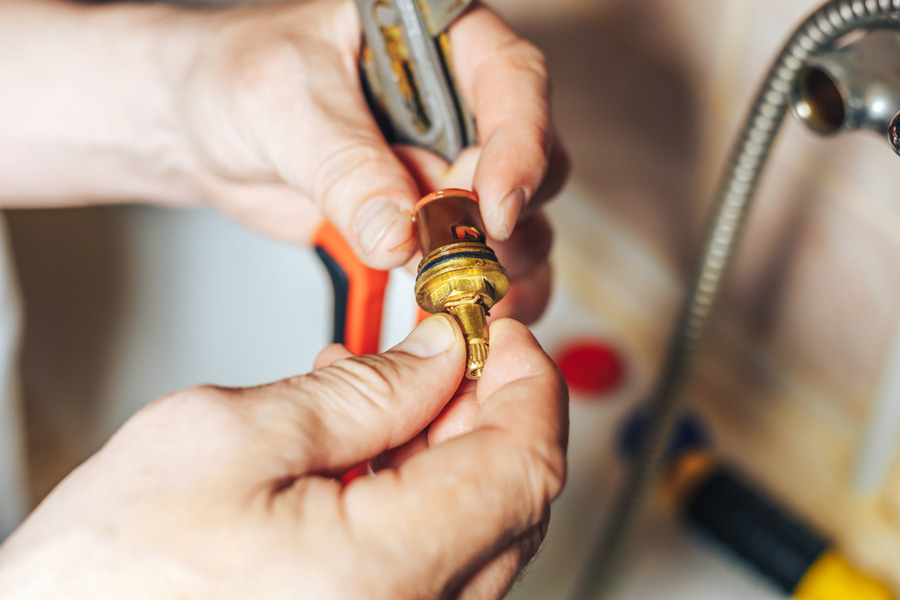Our Motives Behind Correcting a Malfunctioning Faucet
Our Motives Behind Correcting a Malfunctioning Faucet
Blog Article
They are making several good points about Should I Repair or Replace a Leaky Faucet? in general in this article just below.

Trickling faucets could appear like a small hassle, yet their impact goes beyond simply the aggravation of the noise. From wasting water to sustaining unneeded monetary prices and health and wellness threats, overlooking a trickling tap can result in numerous effects. In this write-up, we'll explore why it's essential to resolve this typical household problem immediately and efficiently.
Wastefulness of Water
Environmental Effect
Leaking faucets add significantly to water wastefulness. According to the Environmental Protection Agency (EPA), a solitary faucet leaking at one drip per second can lose greater than 3,000 gallons of water each year. This not only pressures water resources yet also impacts ecosystems and wildlife depending on them.
Financial Costs
Boosted Water Costs
Beyond the ecological influence, dripping taps can blow up water bills significantly. The accumulated waste with time translates into greater energy expenditures, which could have been prevented with prompt fixings.
Potential Building Damage
Furthermore, extended trickling can lead to damage to fixtures and surfaces surrounding the faucet. Water build-up can trigger discoloration, deterioration, and also structural issues if left ignored, leading to added fixing costs.
Health Issues
Mold and Mildew Growth
The consistent presence of moisture from a leaking faucet creates an ideal atmosphere for mold and mildew and mold development. These fungi not only compromise interior air top quality yet additionally posture wellness risks, particularly for people with respiratory system problems or allergic reactions.
Waterborne Illness
Stationary water in leaking faucets can end up being a breeding ground for bacteria and various other microorganisms, enhancing the risk of waterborne diseases. Impurities such as Legionella microorganisms prosper in stationary water, potentially leading to serious ailments when consumed or inhaled.
Do it yourself vs. Specialist Repair service
Benefits and drawbacks of DIY Repair
While some might try to take care of a dripping tap themselves, do it yourself repair work come with their very own set of obstacles. Without appropriate knowledge and devices, DIY efforts can worsen the issue or bring about insufficient repairs, lengthening the issue.
Advantages of Hiring a Professional Plumber
Employing a professional plumber makes sure that the underlying reason for the leaking faucet is attended to efficiently. Plumbing professionals have the know-how and devices to identify and repair faucet issues successfully, saving time and decreasing the danger of further damages.
Step-by-Step Guide to Dealing With a Dripping Tap
Tools Needed
Prior to attempting to take care of a trickling faucet, collect the necessary tools, consisting of a flexible wrench, screwdrivers, substitute parts (such as washers or cartridges), and plumber's tape.
Usual Faucet Issues and Their Solutions
Determine the kind of tap and the specific problem creating the drip. Usual problems include worn-out washers, rusty shutoff seats, or damaged O-rings. Refer to producer guidelines or on-line tutorials for step-by-step assistance on repair services.
Safety nets
Regular Maintenance Tips
To stop dripping faucets, carry out regular upkeep such as cleansing aerators, evaluating for leaks, and replacing worn-out parts quickly. Furthermore, think about installing water-saving devices or upgrading to much more effective fixtures.
Significance of Prompt Fixes
Attending to trickling taps as quickly as they're observed protects against additional water waste and prospective damage, eventually saving both water and money in the long run.
Impact on Home Value
Understanding of Well-Maintained Home
Preserving a residential property in good condition, including resolving upkeep issues like trickling taps, boosts its viewed value and desirability amongst potential purchasers or tenants.
Impact on Resale Value
Qualities with well-kept plumbing components, including faucets, command greater resale worths in the property market. Dealing with leaking taps can contribute to a positive impact during residential property evaluations and negotiations.
Ecological Obligation
Specific Payment to Conservation
Taking duty for taking care of dripping taps straightens with wider initiatives toward water preservation and environmental sustainability. Every person's actions jointly make a significant influence on preserving priceless resources.
Lasting Living Practices
By prioritizing punctual repair services and adopting water-saving practices, people contribute to lasting living practices that benefit both existing and future generations.
Final thought
Resolving a leaking tap goes beyond plain convenience; it's a necessary action toward saving water, reducing monetary prices, and protecting wellness and residential or commercial property. Whether via DIY repair services or specialist support, doing something about it to take care of trickling faucets is a little yet impactful means to advertise responsible stewardship of resources and add to a much healthier, more sustainable future.
How to Fix a Leaky Faucet: Step-by-Step Repair Guide
A leaky faucet may seem like a simple annoyance, but if it's not fixed promptly, that leak could cost hundreds to potentially thousands. From water damage to mold, mildew, and high water bills, even a tiny leak can be catastrophic if left unattended. Damage like this can even affect the overall value of your home, so it's important to take the right approach for leaky faucet repair. You may need the help of a plumber in some cases, but we've got a few tips you can try on how to fix a leaky faucet before calling the pros.
Four Faucet Types
When you're learning how to fix a leaky faucet, the first step is knowing what kind of faucet you're working with! There are four common types.
Cartridge Faucets
Cartridge faucets come in one- or two-handled varieties. In one-handled cartridge faucets, hot and cold water combines in a single cartridge. In the two-handled versions, hot and cold water are controlled separately and mixed in the faucet.
Ball Faucets
Ball faucets have a single lever you push up and down to adjust the pressure and rotate to change the temperature. A slotted metal ball controls the amount of water allowed into the spout.
Compression Washer Faucets
They're the oldest type of faucet, but they're still used in many homes — especially older ones. Compression faucets have two separate handles that, when turned, raise or lower the washer that seals a water valve. This valve stops water from flowing through the faucet when it is turned off.
Disc Faucets
Disc faucets rarely need to be repaired due to their maintenance-free design. The water flow is controlled by two discs — the upper one raises and lowers against a fixed lower disc, creating a watertight seal. If your disc faucet starts leaking, you may need to replace the seals or clean residue buildup from the inlets.
Fixing a Leaky Faucet
Step 1: Turn Off the Water
Whether you're learning how to fix a leaky bathtub faucet or how to fix a leaky kitchen faucet, always turn off the water supply to your working area when you're fixing a leak. The last thing you want is a flood added to your list of things to fix.
Look for the shutoff valves below your sink or around the tub and turn them clockwise to stop the water flow. If your faucet doesn't have shutoff valves, you may need to turn off the water for the whole house. Check to make sure it's off by turning the faucet on. If nothing comes out, you're ready to start the repair.
Step 2: Take Apart the Faucet
How you disassemble your faucet depends on the type of fixture you have. You can use a flathead screwdriver to remove the caps on top of the handle or handles for cartridge and compression faucets. Inside, you should see handle screws. Unscrew these with a screwdriver to remove the handle.
Disc- and ball-style faucets will typically have an inlet screw near the handle, and removing that will reveal the interior of the faucet.
Detach the Valve Stem
For cartridge- and compression-style faucets, you'll see the inner valve stem or cartridge once you remove the faucet handles. If you have a compression faucet, unscrew the brass valve stem. If you have a cartridge faucet, pull out the cartridge. If your cartridge has been in place for a while, it may require some tools or extra force to remove it due to mineral deposits.
Examine and Replace Parts
Once you've removed the parts, check them out to confirm what needs to be replaced. You may see corroded rubber washers, O-rings, stems, or cartridges. On a ball-style faucet, check the seats and springs for damage.
If you need to repair a leaky disc faucet, check the inlet and seals on the lower disc.
Once you determine what parts must be replaced, visit your local hardware store. Bring the damaged parts with you to ensure you can purchase the correct components to replace them.
Clean Valves and Faucet Cavity
If you've removed a stem or cartridge, you may notice mineral buildup in the faucet's threads. Use white vinegar to clean the valve seat by soaking it for a few minutes, then scrub it away with a soft toothbrush and rinse with warm water. You can also clean the interior of the faucet in the same way.
Reassemble the Faucet
Once your faucet is cleaned and the required parts have been replaced, it's time to reassemble it. Put the pieces back together and slowly turn the water supply back on. Doing this slowly is crucial because too much initial water pressure can damage the new hardware you've just installed.
https://homewarranty.firstam.com/blog/how-to-fix-leaky-faucet

As an enthusiastic person who reads on Why Are My Faucets Dripping (And Can I Fix It Myself)?, I was thinking sharing that excerpt was essential. Sharing is nice. Helping others is fun. Thank you for your time. Kindly stop by our blog back soon.
Report this page